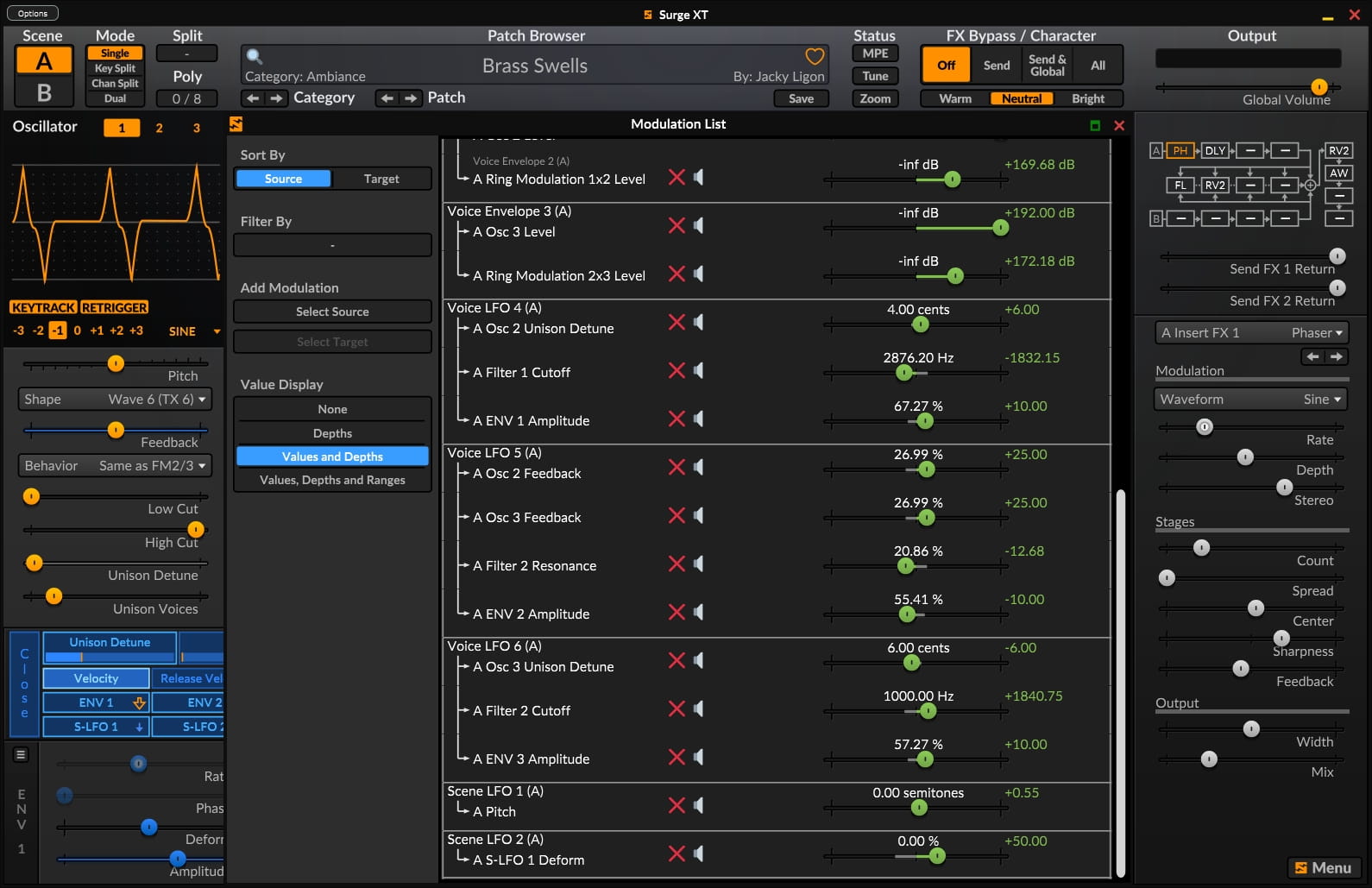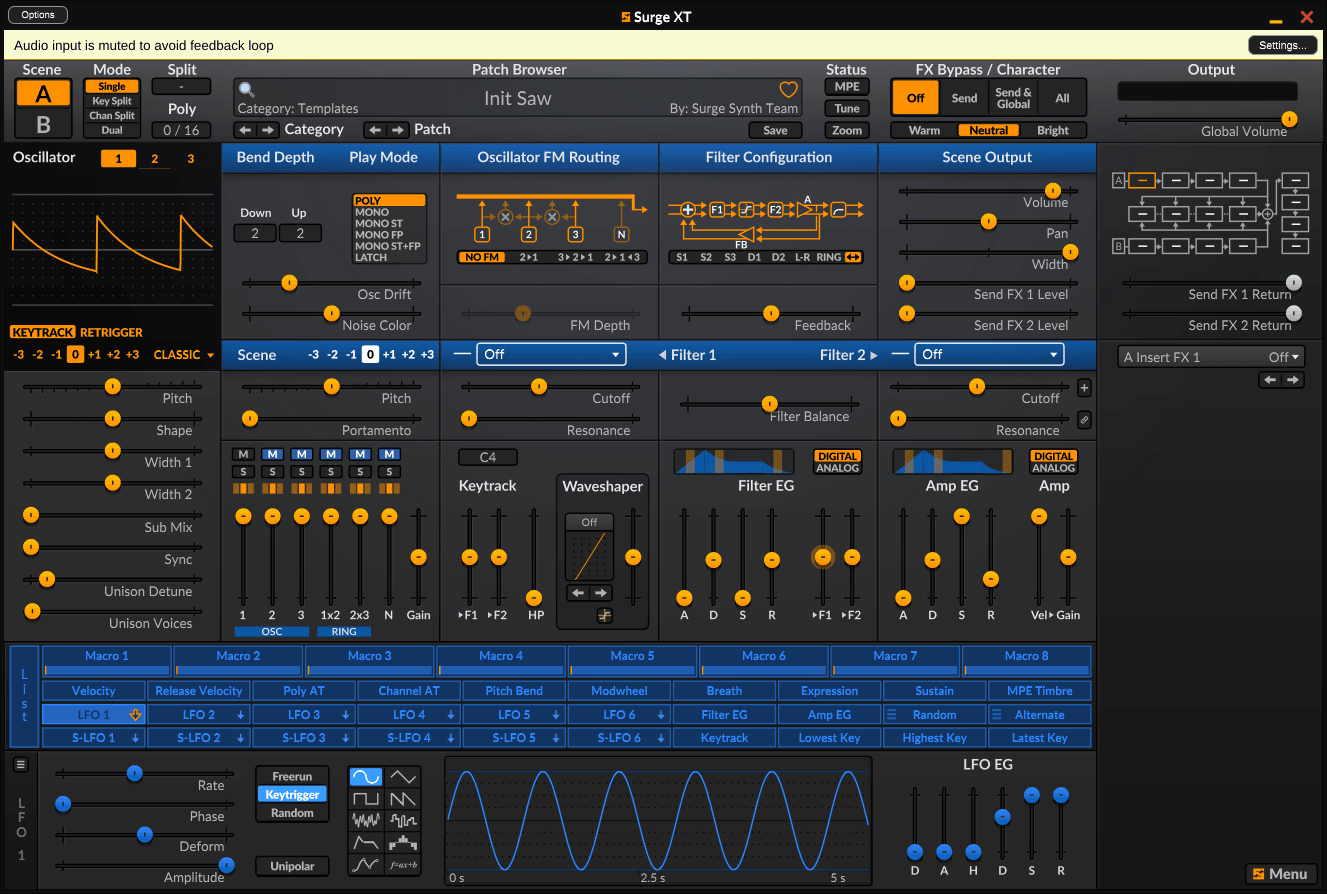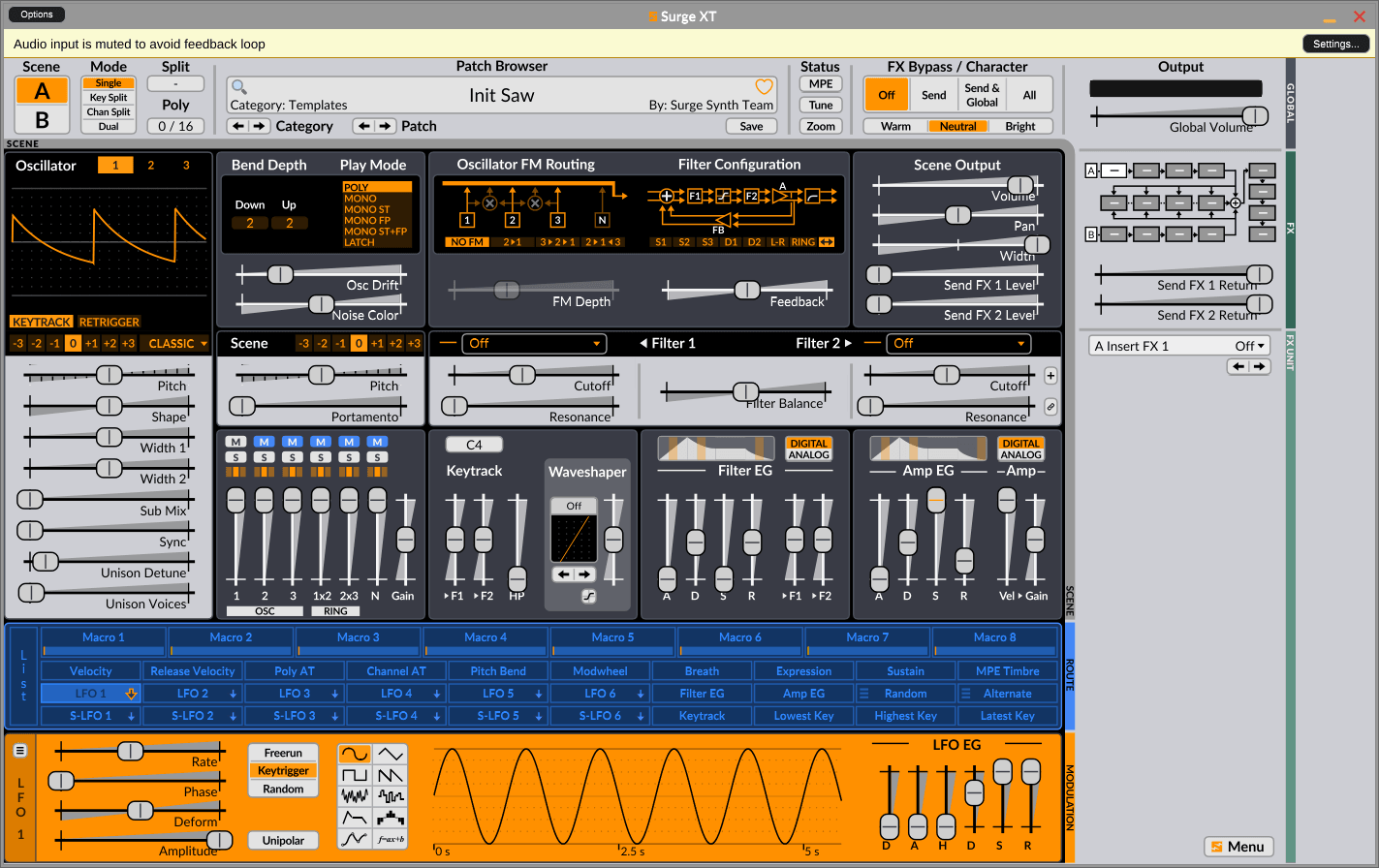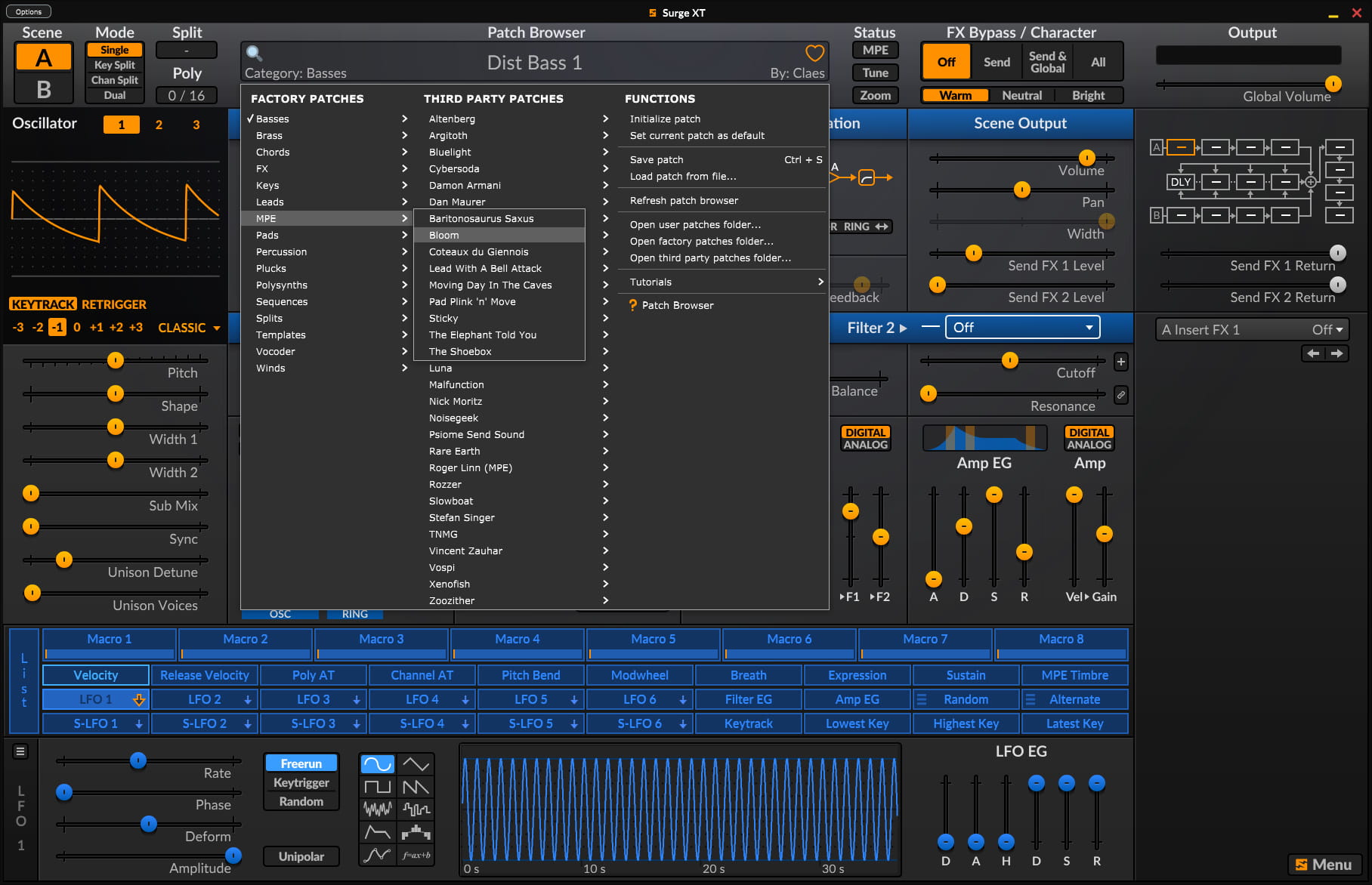Piʻi ʻana






DESCRIPTION:
A sound designer’s dream. A friendly, open community.
Featuring many synthesis techniques, a great selection of filters, a flexible modulation engine, a smorgasbord of effects, and modern features like MPE and microtuning.
General:
Synthesis method: Subtractive hybrid
Each patch contains two scenes which are separate instances of the entire synthesis engine (except effects) that can be used to create layered or split patches.
Quick category-based patch browser with textual search and favorites
Runs on a variety of operating systems, plugin formats, and architectures
Each patch contains two scenes which are separate instances of the entire synthesis engine (except effects) that can be used to create layered or split patches.
Quick category-based patch browser with textual search and favorites
Runs on a variety of operating systems, plugin formats, and architectures
Oscillators:
3 oscillators per scene, with 12 versatile oscillator algorithms: Classic, Modern, Wavetable, Window, Sine, FM2, FM3, String, Twist, Alias, S&H Noise and Audio Input.
Classic oscillator is a morphable pulse/saw/dual saw oscillator with a sub-oscillator and hard sync.
Modern oscillator is a mixable saw/pulse/triangle oscillator with an optional sub-oscillator mode for triangle (which can also change to sine or square) and hard sync.
FM2/FM3 oscillators consist of a carrier and 2 or 3 modulators and various options.
String oscillator uses two filtered waveguides to emulate plucked or bowed string sounds.
Twist oscillator is based on a very famous Eurorack macro oscillator, and it offers a myriad of synthesis options in a very simple and quick way.
Most algorithms (except FM2, FM3, Twist and Audio Input) offer up to 16-voice unison at the oscillator level.
Oscillator FM in 3 different configurations and ring modulation between oscillators 1-2 and 2-3.
Most oscillator algorithms (except FM2, FM3, Sine and Alias) are strictly band-limited, yet still cover the entire audible spectrum, delivering a clear, punchy and clean sound.
Noise generator with variable spectrum (available directly in the oscillator mixer).
Classic oscillator is a morphable pulse/saw/dual saw oscillator with a sub-oscillator and hard sync.
Modern oscillator is a mixable saw/pulse/triangle oscillator with an optional sub-oscillator mode for triangle (which can also change to sine or square) and hard sync.
FM2/FM3 oscillators consist of a carrier and 2 or 3 modulators and various options.
String oscillator uses two filtered waveguides to emulate plucked or bowed string sounds.
Twist oscillator is based on a very famous Eurorack macro oscillator, and it offers a myriad of synthesis options in a very simple and quick way.
Most algorithms (except FM2, FM3, Twist and Audio Input) offer up to 16-voice unison at the oscillator level.
Oscillator FM in 3 different configurations and ring modulation between oscillators 1-2 and 2-3.
Most oscillator algorithms (except FM2, FM3, Sine and Alias) are strictly band-limited, yet still cover the entire audible spectrum, delivering a clear, punchy and clean sound.
Noise generator with variable spectrum (available directly in the oscillator mixer).
Filter block:
Two filter units in 8 different configurations.
Feedback loop available in 7 of those configurations.
Available filter algorithms: Lowpass (12 and 24 dB/oct, each with 3 variations), Legacy Ladder Lowpass (6-24 dB/oct), Vintage Ladder Lowpass (2 variations, each with and without gain compensation), Highpass (12 and 24 dB/oct, each with 3 variations), Bandpass (12 and 24 dB/oct, each with 3 variations), Notch (12 and 24 dB/oct, each with 2 variations), Allpass (3 variations), Comb (positive and negative), S&H.
Open-source additions to our filter algorithms include: K35 and Diode Ladder filter types from Odin 2 synthesizer, 12 and 24 dB/oct multimode filters from OB-Xd, and weird but fascinating Cutoff Warp, Resonance Warp and Tri-Pole filters by Jatin Chowdhury!
Filters can self-oscillate (with excitation) and respond amazingly fast to cutoff frequency changes.
Waveshaper (43 shapes).
Feedback loop available in 7 of those configurations.
Available filter algorithms: Lowpass (12 and 24 dB/oct, each with 3 variations), Legacy Ladder Lowpass (6-24 dB/oct), Vintage Ladder Lowpass (2 variations, each with and without gain compensation), Highpass (12 and 24 dB/oct, each with 3 variations), Bandpass (12 and 24 dB/oct, each with 3 variations), Notch (12 and 24 dB/oct, each with 2 variations), Allpass (3 variations), Comb (positive and negative), S&H.
Open-source additions to our filter algorithms include: K35 and Diode Ladder filter types from Odin 2 synthesizer, 12 and 24 dB/oct multimode filters from OB-Xd, and weird but fascinating Cutoff Warp, Resonance Warp and Tri-Pole filters by Jatin Chowdhury!
Filters can self-oscillate (with excitation) and respond amazingly fast to cutoff frequency changes.
Waveshaper (43 shapes).
Modulation:
12 LFO units available, 6 are per voice and 6 are global for the whole scene.
DAHDSR envelope generators on every LFO.
LFO shapes consist of 7 deformable LFO waveforms, step sequencer, a fully-fledged multi-segment envelope generator (MSEG) with various curves and up to 128 nodes, and last but not the least – a formula modulator which utilizes Lua scripting language to provide completely custom modulator output.
Voice LFOs allow envelope retriggering in step sequencer mode.
Extremely fast and flexible modulation routing. Almost every continuous parameter can be modulated!
DAHDSR envelope generators on every LFO.
LFO shapes consist of 7 deformable LFO waveforms, step sequencer, a fully-fledged multi-segment envelope generator (MSEG) with various curves and up to 128 nodes, and last but not the least – a formula modulator which utilizes Lua scripting language to provide completely custom modulator output.
Voice LFOs allow envelope retriggering in step sequencer mode.
Extremely fast and flexible modulation routing. Almost every continuous parameter can be modulated!

